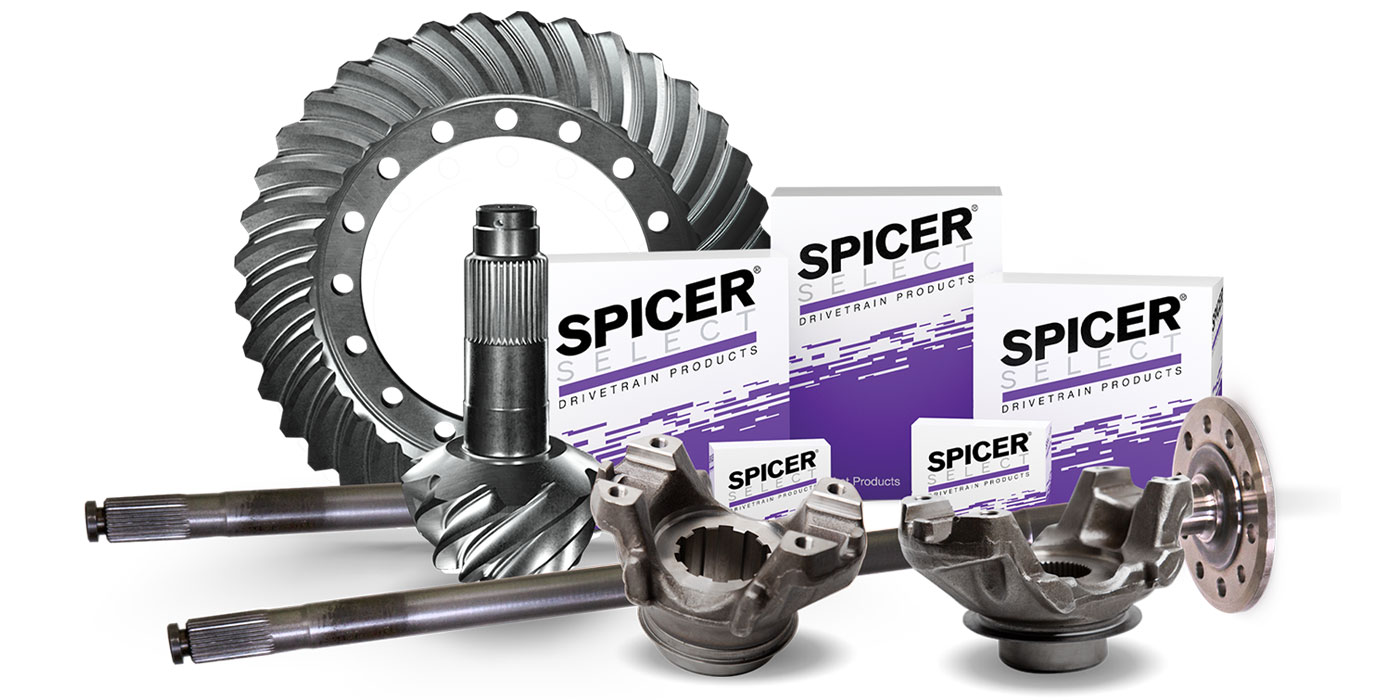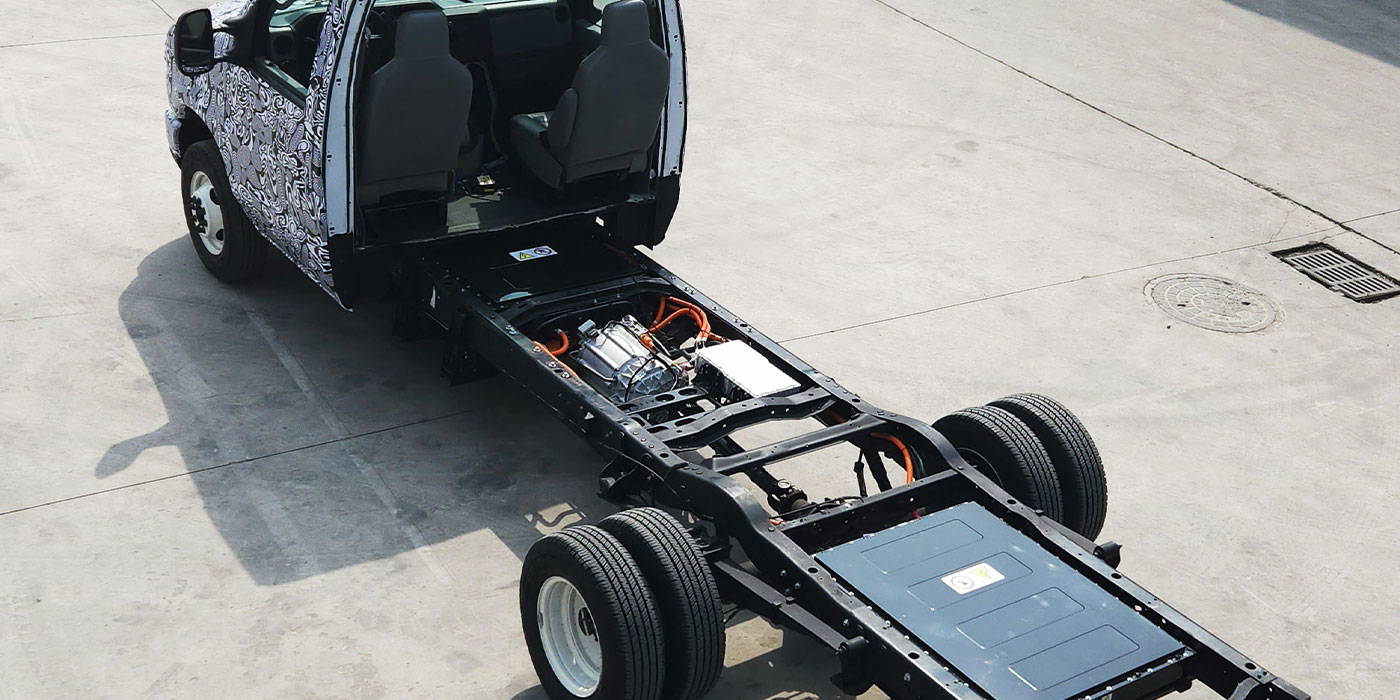Drivetrain choices start by understanding the mission of the vehicle
It’s all about matching systems. The spokespersons for Eaton and ArvinMeritor agree that if the drivetrain components are incompatible, vehicle performance is not going to be optimized. Axle ratios and transmission gearing need to work in harmony, otherwise these components can experience premature wear or perhaps failure. Then there’s optimizing fuel economy –– the drivetrain has to have matched components to get it all right.
Spec’ basics
Charlie Allen, director of global service for ArvinMeritor, says when spec’ing drivetrains the critical element is the application. “The user needs to understand the mission of the vehicle, including the load it is to carry, how fast the vehicle will travel and how long it will travel at that speed, and the terrain the vehicle will cover. Only when all of these factors have been taken into consideration can the user can develop the vehicle spec’.”
To put it simply, if a fleet wants to use a vehicle for a high-speed line-haul operation, then the engine and transmission combination need to reflect that usage. A truck that drives in the city will be specified to provide maximum performance during stop-and-go traffic. But having made that case, Allen points out that with today’s escalating diesel prices fleets and operators also place more emphasis on fuel economy.
Fleets and operators may want to rely on the specification guidelines offered by engine simulation programs. Allen gives an example of an operator who did his best to figure out his drivetrain specification based on the spec’s of some of his peers running the same kinds of loads under the same conditions. The driver had specified the wrong or non-optimal axle ratio for a heavy-haul; the other drivers had drivetrains specified with different axle ratios for the same loads and were getting better fuel economy. It was not a huge difference, but significant enough to cut into his profits.
Allen went on to say that fleets and operators might also want to take care when buying a stock truck. If the specifications are not correct for the job, the fleet or operator could be adding components, like another axle, that would exceed the drivetrain’s limitations, which could cause unscheduled downtime or premature component failures.
“Fleets or operators that want to purchase stock vehicles should ask the maker to check the application guidelines,” Allen says. “The guidelines can help you get the right truck for the job and keep you out of trouble.”
Fuel economy
“Fuel economy in Class 8 vehicles, or any vehicle for that matter, is impacted by the engine characteristics, driveline specification, and resistance factors that include load, aerodynamic drag and rolling resistance,” says Mark Boardman, application-engineering manager for Eaton Corp. and representing the Roadranger drivetrain system. “Drivetrain specifications that need to be considered include transmission overall gear ratio, transmission step size, axle ratios and tire sizes. Although the driver controls the engine torque with the accelerator pedal, it is really these elements of the drivetrain specification that control at what speed the engine will operate for any given condition and hence what level of fuel economy and performance will be achieved at cruise speed.”
Boardman adds that a properly specified drivetrain can keep the engine operating more of the time at its point of best fuel economy, whereas an improperly specified drivetrain will result in the engine operating for long periods of time where it cannot deliver good fuel economy.
The axle and tire size will also dictate where the engine will operate during cruise conditions. According to Boardman, these should be selected to allow the engine to operate in the area of best fuel efficiency at the road speed and load where the vehicle will spend most of its time. “Of course, there are trade-offs to be considered. Gearing the vehicle too fast may result in having to shift too often on slight grades or being in the wrong transmission gear ratio during extended runs at 55 MPH.”
That’s why an automated transmission presents truck users with a host of advantages, believes Boardman. “If you have an automated transmission you can gear the vehicle faster and allow the engine to operate closer to its ‘sweet spot’ since the burden of shifting has been removed, which can improve fuel economy,” he says.
In addition, Boardman notes the transmission overall gear ratio range needs to be selected to provide the level of startability required in the application while still providing the top-end gear ratio for the cruise speed operation. The number of gears and step size is selected to keep the engine operating in its area of best fuel efficiency at speeds below cruise speed. Engines with narrow fuel islands will require smaller step size transmissions with more gears to get best fuel economy, whereas engines with wider fuel islands can use larger step transmissions with fewer gears. The down side of smaller steps and more gears is more shifting.
“Once again, automated transmissions can eliminate the shifting burden,” says Boardman. “An additional consideration is the use of 13-speed transmissions that have larger steps in the lower gears and smaller steps in the higher gears. The larger steps in the lower gears have minimal impact on fuel economy, since little time is spent in these gears and the smaller steps in the higher gears allow for increased fuel economy in the gears where the truck operates most of the time.”
Automated mechanical transmissions are a good fit for most applications, contends ArvinMeritor’s Allen. For one thing, he says, they provide optimum shifting for better fuel economy –– and it takes the driver out of the drivetrain managing job and lets him or her concentrate on driving and delivering loads.
Hybrid technology
“As fuel continues to get more expensive, fleets are going to be looking to technology to help offset fuel costs,” Allen continues. “There will be more interest in making a gallon of fuel go as far as it can.” He goes on to say that ArvinMeritor is currently developing a hybrid vehicle with Wal-Mart in conjunction with Cummins and International Truck.
The interest in hybrid technology is growing. The fact that they provide better fuel economy and can help limit expensive idling time is significant –– now that they are being developed so they can handle hotel loads, cooling and heating with APUs –– and adds to their appeal as an idling solution.
New emissions compliant engines –– and the prospect for more stringent emissions compliant ones in conjunction with the increased cost of fuel –– are creating increased demand for more fuel-efficient solutions for trucks, notes Eaton’s Boardman. “That’s why drivetrain suppliers are bringing out products and features and working to develop new ones that will enhance fuel efficiency and help lower emissions,” says Boardman. “Hybrid-Electric drivetrains are one significant example, and Eaton is at the forefront in this area. Others that have been introduced include the on-demand differential lube pump at Dana, tire inflation management systems, and automated transmissions with shift-calibrations optimized for specific engines such as the Eaton Fuller UltraShift-LEP and CAT C15 ACERT.”
Eaton announced earlier this year that it had medium-duty hybrid power systems now commercially available and will be ready for customer deliveries in 2008 on the chassis of several major North American commercial vehicle manufacturers. These include International Truck and Engine Corp., Kenworth Truck Co., Peterbilt Motors and Freightliner Corp.
Axle designs
Axle design (apart from ratio selection) can also impact fuel efficiency depending on features and basic design efficiency, notes Boardman. “One of the more significant potential impacts is a differential lube pump,” says Boardman. “In a conventional differential with a lube pump, the pump operates continuously and uses energy to do so. Some new axles from Dana Corp. have an on-demand lube pump that only operates if the differential is compensating for different wheel speeds. This advanced differential lube pump can save fuel.”
Boardman believes that the clutch has little direct impact on fuel economy since it is almost always completely engaged when the vehicle is moving. “However, newer engines operate at best fuel economy at lower engine speeds,” says Boardman. “Operation at lower engine speeds can produce driveline torsional oscillations that can be damaging to the drivetrain components. The clutch contains an element internal to it to dampen these oscillations and prevent drivetrain damage. If you are specifying the drivetrain to operate the engine at lower speeds for fuel economy, then it is important to specify a clutch with a correct damper to allow operation at these engine speeds without damaging the driveline.”
Optimized
Drivetrains are optimized when they are specified for the right applications –– roads, loads and so on. Fleets can get help with the choices by using application guidelines offered by engine makers and component suppliers. To “get it right,” don’t leave anything to chance.
Maintenance Tips
As fleets prepare their vehicles for winter, ArvinMeritor’s Allen suggests that they remember to take care of basic drivetrain maintenance. Here’s his checklist:
• Make sure the air system is free of water
• Service the air dryer cartridge –– they do not have an infinite life
• Purge air tanks if they do not have an automated drain system
• Make sure fluids are where they need to be –– fix leaks
• Use only approved synthetic lubricants in gear box and axles
• Check to make sure the approved grease is in brake components and slack adjusters
• Check truck and trailer tire air pressure, and adjust for winter driving




